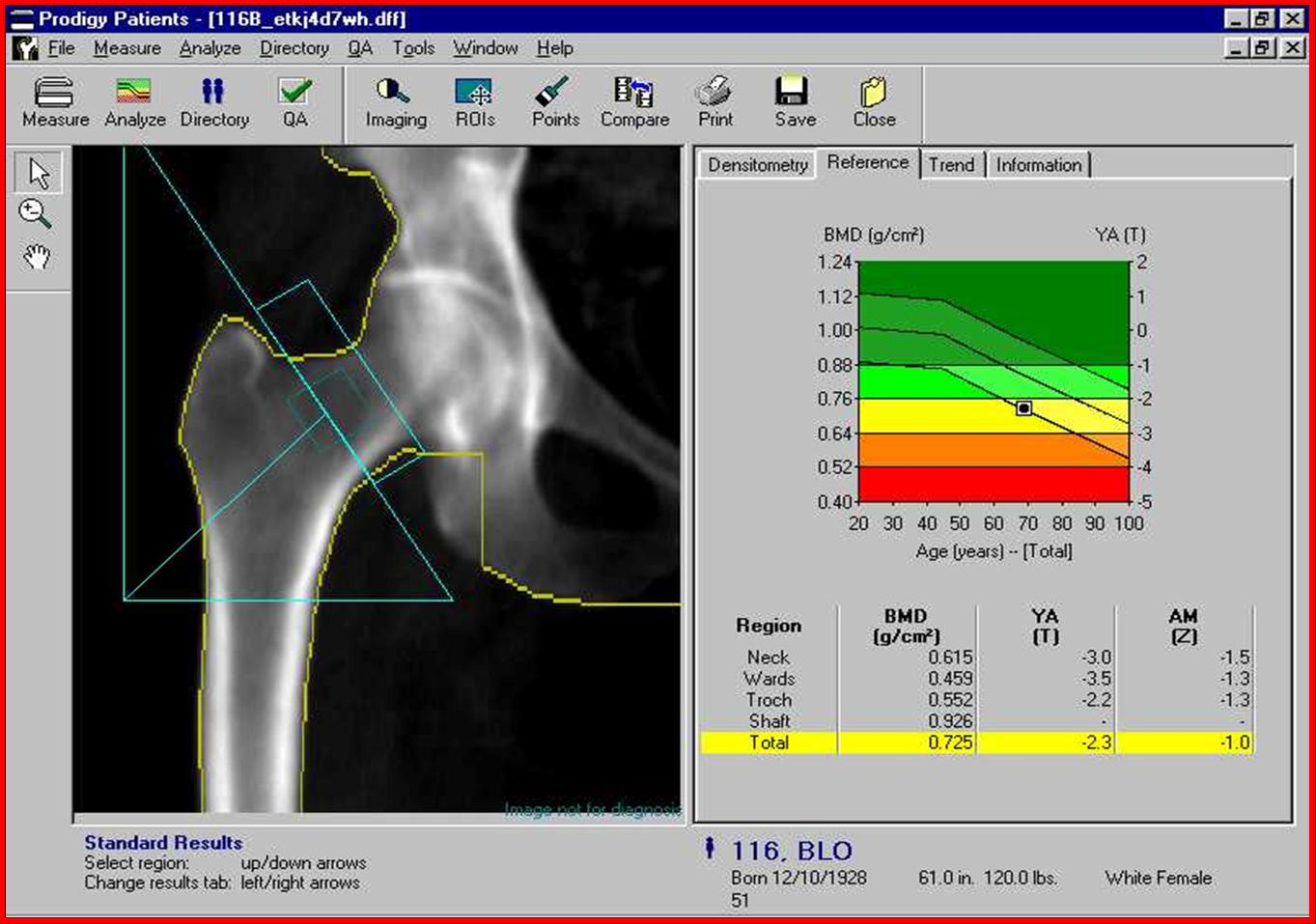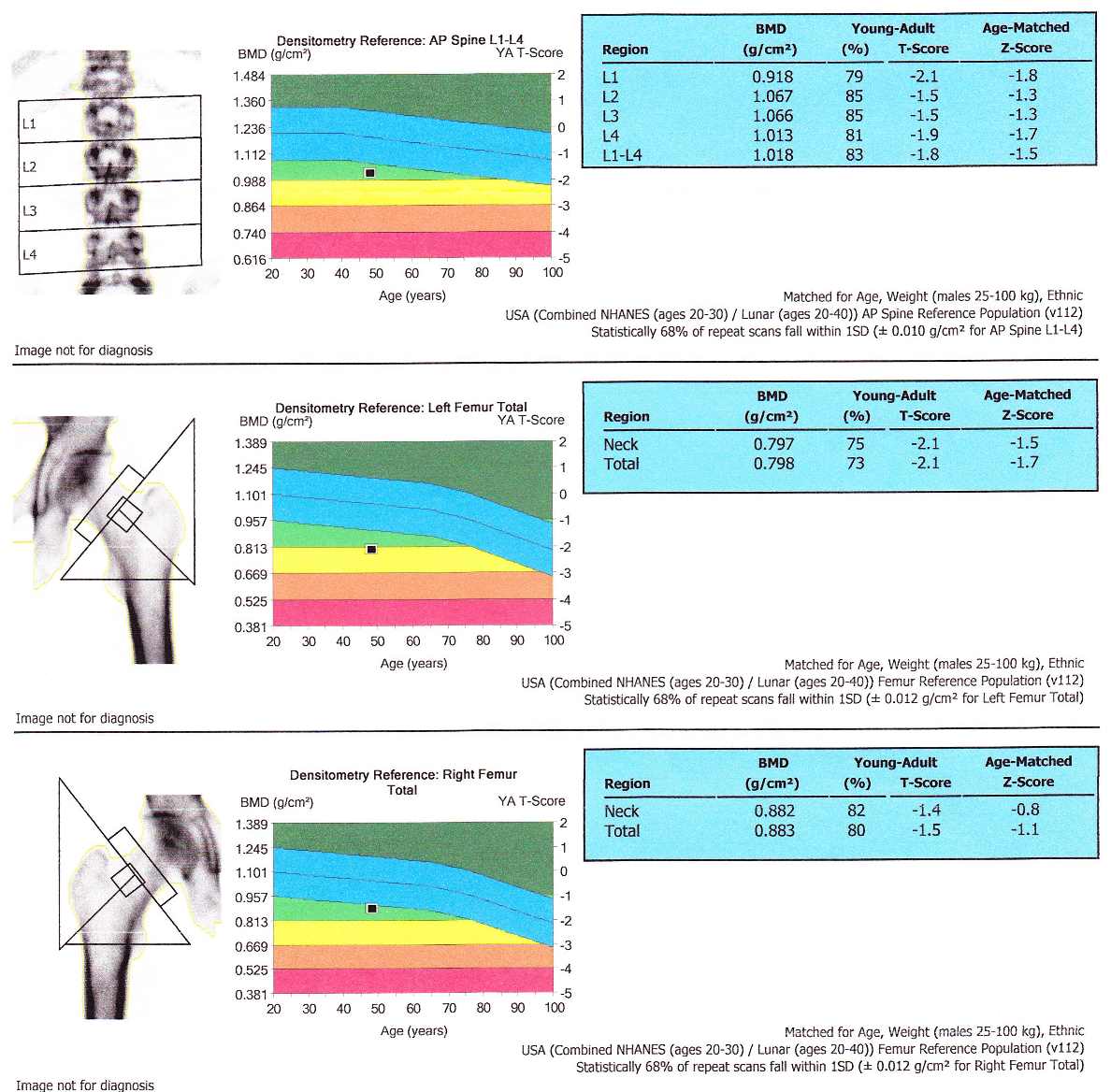
We ask all patients between 11 and 55 years of age about their last menstrual cycle to determine the possibility of pregnancy. Therefore, there must be zero chance a patient is pregnant. Important Patient InformationĪll scans use ionizing radiation. If we’re completing the modified version of the test, we will scan your wrist.Īfter the scan is complete, one of our bone density radiologists will review the results and send a detailed report to your doctor. If there is any chance that you are pregnant, please talk to your doctor before coming in for your scan.ĭepending on your exam, a scanner will pass over you and examine your lower spine or hip. Using dual-energy x-ray absorptiometry, we will calculate your bone mineral content. Please remain as still as possible as movement may blur the images. The scan should take approximately 10 minutes. We will use a foam block to elevate your legs in an upright position to align the spine for optimal measurements. If you exceed the 300-pound weight limit of the machine, we will position you beside the scanner with your arm extended outwards.īefore your testing, you will be positioned on a bed by our technologist. Our scanning beds have a maximum weight restriction of 300 pounds.

You will be weighed and your height measured before your scan. As this is crucial to ensuring quality imaging results, you also may be asked to change into a gown when you arrive to further ensure there are no metals on your person. What To ExpectĪt the time of booking your testing, you will be asked to wear clothing that does not contain any metals such as snaps, buttons, or zippers. Central DEXA (or Dual Energy X-ray Absorptiometry) examines your hip bones and spinal area, while peripheral tests examine the bone density levels present in your wrist, finger, and heel zones. There are 2 different types of bone densitometry exams depending on the area of concern. It’s important to educate yourself about bone loss symptoms, exercises, and treatment to help prevent the degradation of your body and bones. The information acquired from these diagnostic exams is incredibly useful for physicians when determining if a patient has osteoporosis, osteopenia, or is at risk for future compromised bone structure.

On Oral steroid medication – any dose taken longer than 12 months.On Osteoporosis medication that has been started since the last exam.50+-year-old patients who had a bone density test done less than 2 years ago (anywhere in Alberta) must meet one or more of the clinical indications below before a bone density exam can be performed:.Are eligible to have a bone density exam once every 2 years.Who Qualifies For a Bone Density Diagnostic Exam Men 50 or older with additional risk factors.

Post-menopausal women 50 or older with additional risk factors.Who Benefits From a Bone Density Diagnostic Exam

The radiation dose from a density test is minimal and is similar to the exposure you get when you go through an airport security scan. Additionally, these three bone density imaging locations are the basis of the World Health Organization’s algorithm for predicting risk factors in the assessment of osteoporosis. Osteoporosis Canada recommends bone density testing and spinal x-rays as part of their world-class Fracture Liaison Service model. By measuring the bone mineral content or density of your bones, doctors can predict whether or not you may be at risk for fractures and can recommend treatment right away. These exams are also used to measure calcium levels, bone loss, and bone structure fragility. A bone density test, also known as BMD (bone mineral density), DEXA, or bone densitometry exam, is most commonly performed on the lumbar spine, hip, and forearm, as these bones have been shown to generate the most reliable measurements for predicting fractures and monitoring treatment.


 0 kommentar(er)
0 kommentar(er)
